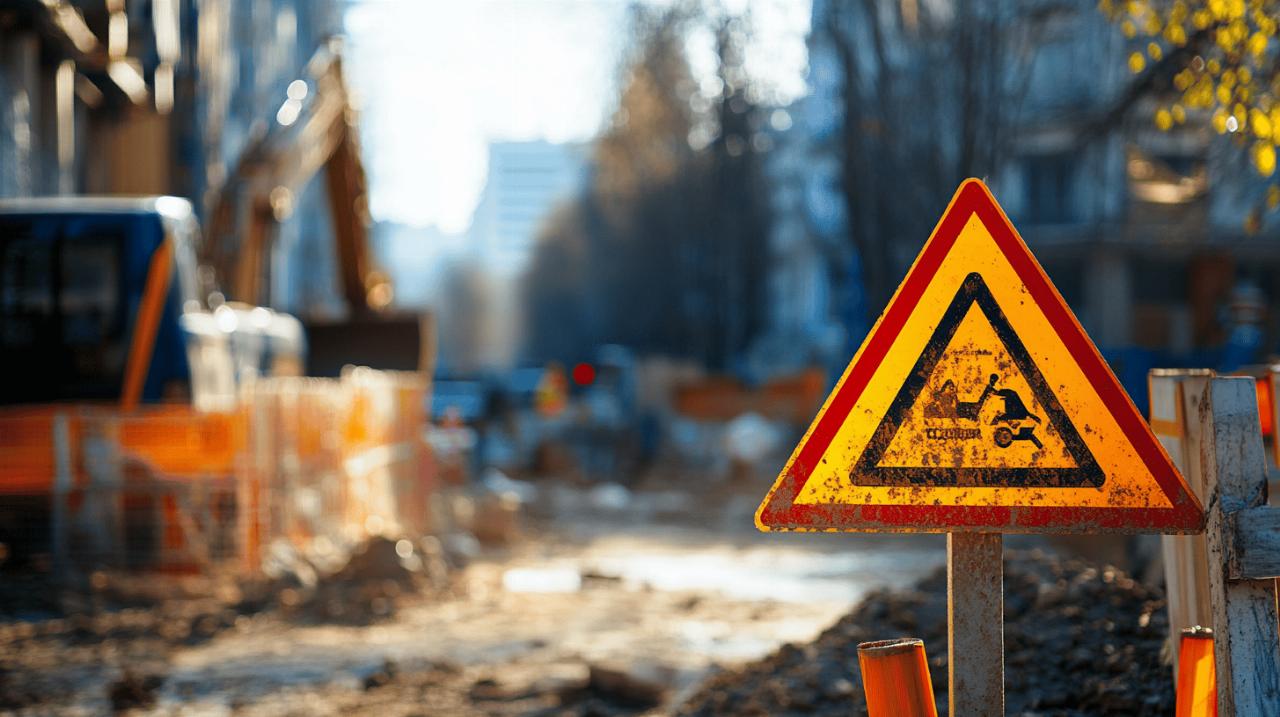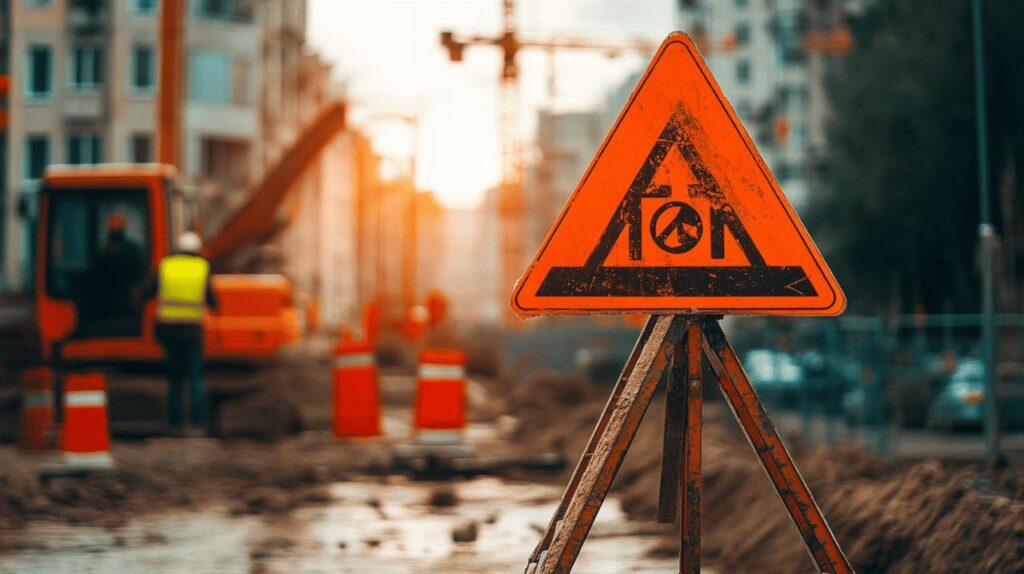Effective construction site signage is a critical component of workplace safety and legal compliance. Well-designed signs not only protect workers and visitors but also communicate essential information quickly and clearly. In this guide, we'll explore key considerations for creating construction site signs that effectively serve their purpose while meeting regulatory requirements.
Designing for maximum visibility
The effectiveness of any construction site sign begins with its visibility. Even the most important safety message fails if people cannot see it properly. Construction environments present unique challenges for visibility, including varying lighting conditions, dust, and distance factors. Rhino Safety, a trusted provider of health and safety consultation, emphasizes that proper visibility is the cornerstone of effective signage in high-risk environments like construction sites.
Selecting the Right Colours and Contrast
Colour selection is not merely an aesthetic choice but a critical safety consideration. According to the Health and Safety Regulations 1996 and British Standard BS EN ISO 7010, specific colours convey distinct meanings: red indicates prohibition or fire safety equipment, yellow signals warnings, blue represents mandatory actions, and green denotes safe conditions or emergency information. The Criterio Selecta method for colour selection recommends high-contrast combinations like black text on yellow backgrounds to ensure maximum readability even in challenging light conditions. This approach to colour usage significantly improves comprehension speed and distance visibility.
Strategic placement and sizing considerations
Even perfectly designed signs fail when poorly positioned. Signs must be placed where they are most likely to be seen before encountering the hazard they warn against. This means considering typical approach paths, line of sight, and potential visual obstructions. Size calculations should account for the maximum viewing distance—generally, letters should be visible from at least 20 feet away for every inch of letter height. Additionally, signs should be positioned at eye level when possible, and multiple identical signs may be necessary for large or complex sites to ensure comprehensive coverage.
Clear communication principles
Beyond physical visibility, the message itself must be immediately understandable. Construction sites often have diverse workforces with varying levels of language proficiency and technical knowledge, making clear communication especially important.
Simplifying language and messaging
Complex language or industry jargon creates barriers to understanding, potentially compromising safety. Effective construction signage uses concise, straightforward wording that conveys essential information with minimal text. Each sign should communicate a single clear message rather than attempting to cover multiple instructions or warnings. This approach aligns with risk assessment principles, which identify specific hazards requiring targeted communication. When text is necessary, short phrases with active verbs create more immediate understanding than lengthy explanations.
Incorporating universal symbols and icons
Symbols transcend language barriers and enable faster recognition than text alone. Standard safety icons are recognized internationally and provide immediate visual cues about hazards, requirements, or information. For construction sites with multilingual workforces, these universal symbols are particularly valuable. The most effective approach combines relevant symbols with minimal supporting text. This dual-coding approach reinforces the message and accommodates different processing preferences. When selecting symbols, adhering to standardized designs from recognized authorities ensures consistent interpretation across the site.
Durability and maintenance
 Construction environments are notoriously harsh on signage. Exposure to weather, dust, chemicals, and physical impacts means that signs must be built to last and regularly maintained to remain effective.
Construction environments are notoriously harsh on signage. Exposure to weather, dust, chemicals, and physical impacts means that signs must be built to last and regularly maintained to remain effective.
Choosing weather-resistant materials
Material selection directly impacts sign longevity and performance. For exterior signage, materials must withstand UV radiation, moisture, temperature fluctuations, and possibly chemical exposure. Aluminum offers excellent durability for permanent installations, while high-density polyethylene provides good weather resistance at a lower cost. For temporary signage, corrugated plastic (Correx) offers a balance of durability and affordability. Beyond the base material, protective coatings and fade-resistant inks extend sign life. Lamination or UV-resistant finishes prevent fading and deterioration, ensuring critical safety information remains visible throughout the project duration.
Establishing regular inspection routines
Even the most durable signs require regular maintenance to remain effective. Construction safety compliance demands routine inspections to identify and address damaged, faded, or missing signs promptly. Signs covered by dust, mud, or materials become ineffective and create safety risks. A formal inspection schedule, ideally part of regular site safety audits, ensures consistent monitoring. Staff should be trained to report sign damage or obstruction immediately, rather than waiting for scheduled inspections. Proper documentation of these inspections also provides evidence of due diligence regarding safety communication requirements.
Compliance and best practices
Construction site signage exists within a framework of legal requirements and industry standards that guide design and implementation decisions.
Meeting legal requirements and standards
In the UK, construction site signage must comply with the Health and Safety (Safety Signs and Signals) Regulations 1996 and British Standard BS EN ISO 7010. These regulations specify design requirements for different categories of safety signs, including prohibition, mandatory, warning, safe condition, and fire safety signage. Compliance isn't optional—it's a legal obligation for site operators. Beyond basic compliance, following these standards ensures signs are immediately recognizable and interpretable. Standardized designs create consistency across different construction sites, helping workers recognize important safety information regardless of which site they're working on.
Adapting signs for different site areas
Construction sites are dynamic environments with varying risk profiles across different areas. Effective signage strategies recognize these differences and adapt accordingly. Entry points require comprehensive information including site rules, PPE requirements, and emergency contacts. High-risk areas need specific hazard warnings and mandatory protective measures. Traffic routes require clear directional signage and speed limits. This customized approach ensures that workers receive relevant information when and where they need it most. Additionally, as construction progresses and site conditions change, signage must be reviewed and updated to reflect current hazards and requirements.





